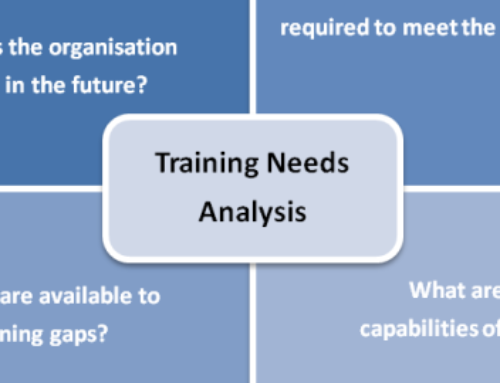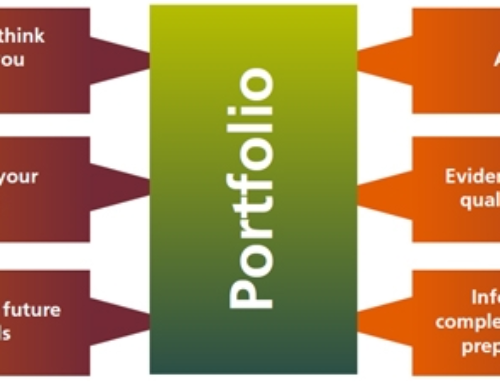Fogg Behavior Model
Fogg Behavior Model, or “FBM” for brevity is a psychological model. FBM identifies and defines three factors that control whether a behavior is performed. (Note: In this model, “persuasion” refers to attempts to influence people’s behaviors, not attitudes.) These three factors are: motivation, ability, and triggers, each of which has subcomponents. The FBM asserts that for a person to perform a target behavior, he or she must;
- Be sufficiently motivated
- Have the ability to perform the behavior
- Be triggered to perform the behavior.
These three factors must occur at the same moment, else the behavior will not happen. The FBM is useful in analysis and design of persuasive technologies.
The Need to Understand Behavior Change
The tools for creating persuasive products are getting easier to use, with innovations in online video, social networks, and metrics, among others. As a result, more individuals and organizations can design experiences they hope will influence people’s behaviors via technology channels.
However, many attempts at persuasive design fail because people don’t understand what factors lead to behavior change. Persuasive technology is fundamentally about learning to automate behavior change.
To effectively encode experiences that change behaviors, we need a rich yet practical understanding of human psychology, specifically insights into the factors that drive human behavior. Without this understanding, designers of persuasive experiences are mostly guessing at a solution. The FBM provides designers and researchers with a systematic way to think about the factors underlying behavior change.
Three Factors in the Behavior Model
The FBM has three principal factors (motivation,ability, and triggers) which must be present at the same instant for the behavior to occur. In here we explain more about how these factors work together, and then we will define the subcomponents of each factor, followed by description of how the FBM is useful in research and design.
Visualizing the Behavior Model
Figure 1 shows one way to visualize the FBM.
- The graph vertical axis is for motivation. A person who is low on motivation to perform the target behavior would register low on the vertical axis. High on the axis means high motivation.
- The horizontal axis is for ability. A person who has low ability to perform a target behavior would be marked toward the left side of the axis. The right side is for high ability.
These two axes define a plane. In the upper right hand corner is a star that represents the target behavior. The placement of this star is symbolic, meant to suggest that high motivation and high ability are typically necessary for a target behavior to occur. To emphasize this relationship between motivation, ability and target behavior, Figure 1 also has an arrow that extends diagonally across the plane, from the bottom left corner to the upper right. This arrow, as the words on the figure say, indicates that as a person has increased motivation and increased ability, the more likely it is that he or she will perform the target behavior.
Also on Figure 1 is a factor called “triggers.” The placement of this word is close to the target behavior star to imply that the trigger must be present for the target behavior to occur. While the axes are fixed, one can imagine that the star, representing the target behavior, as well as the related trigger, could be placed anywhere inside the plane defined by the axes.
The visualization in Figure 1 is not the only way to represent the core concepts in the FBM. However, this form seems the most natural and practical.
Figure 1: The Fogg Behavior Model has three factors: motivation, ability, and triggers.
Motivation & Ability Can Trade Off
Suppose a web site creator wants to persuade site visitors to sign up for a newsletter by entering their email address. That behavior – typing in an email address – is the target behavior. In the FBM this target behavior is represented by a star. The target behavior is simple for most people to do. So if we generalize about users on this task, we can place the star toward the right side of the frame: Users have high ability to do the behavior, because it’s easy to type in an email address.
But when it comes to motivation, the story is varied. Many users will have no motivation to type in their email address. For those users the star would be located in the lower right part of the framework. This placement means that ability is high and motivation is low. Other users, however, might really want the free newsletter from the web site, so their motivation level would be high. This would place the star high, in the upper right hand corner of Figure1.
The users who land in the lower right of the grid are unlikely to type their email addresses onto the web form. In contrast, the users in the upper right corner – those with both high motivation and ability – are much better candidates for typing their addresses. With the proper trigger, those with high ability and motivation are likely to perform the target behavior.
Now we change the scenario to show a situation where users have low ability. Suppose that the web site creator has decided to include a math puzzle on the entry form for email addresses. In order for users to submit an email address, they must also solve the puzzle. In this scenario, some users may have difficulty completing the task. So even if someone wants to submit his or her email address, their ability is low: They can’t figure out the math puzzle. In this case, the star representing the target behavior would be in the upper left part of Figure 1: high motivation and low ability.
In this scenario with the hard math puzzle, note that even if the web site creator increases the motivation level, the behavior is still not likely to occur. The FBM makes clear that motivation alone – no matter how high – may not get people to perform a behavior if they don’t have the ability.
In order for behavior to be occur, people must have some non-zero level of both motivation and ability. The implication for designers is clear:
Increasing motivation is not always the solution. Often increasing ability (making the behavior simpler) is the path for increasing behavior performance.
We must remember that If motivation is high enough, people might do extraordinary things – even difficult things – to perform the behavior, for example: If your computer crashes and you fear losing your precious family photos (high motivation!), even if you have low ability with computers, you will work hard with your limited ability to recover the photos.
In most cases of persuasion, people are not on the extremes. Generally, people have at least a modest level of motivation and ability – and these levels can be manipulated. Effective persuasive technologies will boost either motivation or ability (usually by making something simpler, like 1-click purchasing) or both. But that’s not all: The behavior must be triggered. This third factor is often the missing piece.
Triggers & Timing
The third factor in the FBM is a trigger. Without an appropriate trigger, behavior will not occur even if both motivation and ability are high. A trigger can take many forms – an alarm that sounds, a text message, an announcement that a sale is ending, a growling stomach, and so on. Whatever the form, successful triggers have three characteristics:
- First, we notice the trigger.
- Second, we associate the trigger with a target behavior.
- Third, the trigger happens when we are both motivated and able to perform the behavior.
This last issue – timing – is often the missing element in behavior change. In fact, this element is so important the ancient Greeks had a name for it: kairos – the opportune moment to persuade.
The opportune moment for behavior performance is any time motivation and ability put people above the behavior activation threshold.
Although not illustrated on Figure 1, the FBM includes the concept of a behavior activation threshold. When the combination of motivation and ability places a person above the behavior activation threshold, then a trigger will cause that person to perform the target behavior. If a person is underneath this threshold, then a trigger will not lead to the target behavior. The activation threshold could be illustrated as a curved line sweeping across Figure 1, from the upper left corner to the bottom right.
If we want to perform a behavior, a well-timed trigger is welcome. But when our motivation is low for that behavior, a trigger is distracting. Conversely, when we want to perform the behavior being triggered but lack ability, we feel frustrated.
The FBM gives insight into the failure of poorly-timed triggers, the annoyance of this distraction, and the frustration that results. This framework helps explain why some behaviors happen on cue, while other attempts to change our behavior lead only to negative emotions.
Insight from the Behavior Model
In persuasive technology we often look at behavior as something we cause to occur; behavior activation is usually the goal. But there’s another side to behavior change: preventing a target behavior from happening.
The FBM also gives insight into prevention. Specifically, one can stop a behavior by taking away one of the three factors: Is there a way to reduce motivation? To take away ability? Is there a way to remove triggers? If an interventionist can do any of these things successfully, then the behavior will not occur – at least not in the same pattern.
In general, persuasive design focuses on increasing motivation, increasing ability (simplicity), and triggering behavior. To facilitate design for each of these, the next section goes into more depth about the elements of motivation, ability (simplicity), and triggers. Figure2 summarizes these elements.
Elements of Motivation
The goal in designing for motivation is, conceptually, to move a user to a higher position in the FBM landscape. In other words, the users who have high ability but low motivation need to have motivation increased so they cross the behavior activation threshold.
Motivation is a term used in the FBM, there are three core motivators, each with two sides.
Motivator #1: Pleasure / Pain
The first core motivator in the FBM is a dimension that has two sides: Pleasure and pain. What differentiates this motivator is that the result of this motivator is immediate, or nearly so. There’s little thinking or anticipating.
Pleasure or pain are primitive responses, and it functions adaptively in hunger, sex, and other activities related to self-preservation and propagation of our genes.
Pleasure and pain are powerful motivators. When designers are seeking to boost levels of motivation, they can look at how pleasure and pain can be embodied. This motivator type may not be the ideal approach, especially pain, but a thorough review of motivation means at least acknowledging these options.
Motivator #2: Hope / Fear
The second core motivator in the FBM is a dimension that has two sides: Hope and fear. This dimension is characterized by anticipation of an outcome. Hope is the anticipation of something good happening. Fear is the anticipation of something bad, often the anticipation of loss.
This dimension is at times more powerful than pleasure/pain, as is evidenced in everyday behaviour. For example, in some situations, people will accept pain (a flu shot) in order to overcome fear (anticipation of getting the flu). But hope/fear is not always more motivating than pleasure/pain.
The FBM does not rank the power of the core motivators. Instead, designer and researchers should consider each core motivator and apply it to their work as appropriate.
Motivator #3: Social Acceptance / Rejection
The third core motivator in the FBM is a social dimension that has two sides: social acceptance and social rejection. This dimension controls much of our social behaviour, from the clothes we wear to the language we use.
It’s clear that people are motivated to do things that win them social acceptance. Perhaps even more dramatically, people are motivated to avoid being socially rejected. The power of social motivation is likely hardwired into us and perhaps all other creatures that historically depended on living in groups to survive.
Today, with social technologies a reality, the methods for motivating people through social acceptance or social rejection have blossomed. In fact, Facebook gains its power to motivate and ultimately influence users mostly because of this motivator. From posting profile pictures to writing on The Wall, people on Facebook are driven significantly by their desire to be socially accepted.
Figure 2: All three factors in the Fogg Behavior Model have subcomponents.
Elements of Simplicity (Ability)
The next major factor in the FBM is ability. Optimizing this factor can move users across the behavior activation threshold. But what’s the best way to increase ability?
In real-world design, increasing ability is not about teaching people to do new things or training them for improvement.
People are generally resistant to teaching and training because it requires effort. This clashes with the natural wiring of human adults: We are fundamentally lazy. As a result, products that require people to learn new things routinely fail. Instead, to increase a user’s ability, designers of persuasive experiences must make the behavior easier to do. In other words, persuasive design relies heavily on the power of simplicity. A common example is the 1-click shopping at Amazon. Because it’s easy to buy things, people buy more. Simplicity changes behaviors.
Simplicity has six parts. These six parts relate to each other like links in a chain: If any single link breaks, then the chain fails. In this case, simplicity is lost.
1- Time: The first element of simplicity is time. If a target behavior requires time and we don’t have time available, then the behavior is not simple.
2- Money: The next element of simplicity is money. For people with limited financial resources, a target behavior that costs money is not simple.
3- Physical Effort: The third element of simplicity is physical effort. Behaviors that require physical effort may not be simple.
4- Brain Cycles: The next factor in simplicity is what I call “brain cycles.” If performing a target behavior causes us to think hard, that might not be simple. This is especially true if our minds are consumed with other issues.
5- Social Deviance: The fifth element of simplicity is “social deviance.” What I mean by social deviance is going against the norm, breaking the rules of society.
6- Non-Routine: Finally, the sixth element of simplicity is “non- routine.” People tend to find behaviors simple if they are routine, activities they do over and over again.
Key Points about Simplicity
Each person has a different simplicity profile. Some people have more time, some people have more money, and some people can invest brain cycles, while others cannot. These factors vary by the individual, but they also vary by the context. For example, if I have forgotten my wallet at home, behaviors that require money at the marketplace may no longer be simple for me to perform.
Simplicity is a function of a person’s scarcest resource. Even more accurate is this statement: Simplicity is a function of a person’s scarcest resource at the moment a behavior is triggered.
As researchers and designers of behavior change, we should seek to find what resource is scarcest for our audience: Is it time? Is it the ability to think? Is it money?
Whatever the scarcest resource happens to be, once we account for the six factors of simplicity, we can reduce the barriers for performing a target behavior.
In general, persuasive design succeeds faster when we focus on making the behavior simpler instead of trying to pile on motivation. Why? People often resist attempts at motivation, but we humans naturally love simplicity.
Notice that what simplicity means for a typical 9-year-old is different than simplicity for the 55-year-old, because they have different resources in terms of time and money.
Three Types of Triggers
The third factor in the FBM is Triggers. The general concept of triggers goes by many names: prompts, cues, calls to action, and so on.
The idea is similar: A trigger is something that tells people to perform a behavior now.
Often overlooked (or taken for granted), triggers are a vital aspect of designing persuasive products. In fact, for behaviors where people are already above the activation threshold – meaning they have sufficient motivation and ability – a trigger is all that’s required. (I’ll come back to this point.)
Not all triggers function in the same way. Three types of triggers: sparks (trigger that motivates behavior), facilitators(makes behavior easier), and signals (indicates or reminds)are explained in more depth below:
Spark as Trigger
When a person lacks motivation to perform a target behavior, a trigger should be designed in tandem with a motivational element. Examples of sparks can range from text that highlights fear to videos that inspire hope. Sparks can leverage any of these motivational elements.
Sparks and other trigger types can come in various forms; the channel or embodiment doesn’t matter as long as the trigger is recognized, is associated with a target behavior, and is presented to users at a moment when they can take action.
Facilitator as Trigger
This type of trigger is appropriate for users that have high motivation but lack ability. The goal of a facilitator is to trigger the behavior while also making the behavior easier to do. Like sparks, a facilitator can be embodied in text, video, graphics, and more.
An effective facilitator tells users that the target behavior is easy to do, that it won’t require a resource he or she does not have at that moment. For example software updates often use facilitators to gain compliance by implying that one click can get the job done.
Signal as Trigger
This trigger type works best when people have both the ability and the motivation to perform the target behavior. The signal doesn’t seek to motivate people or simplify the task. It just serves as a reminder.
An ordinary example of a signal is a traffic light that turns red or green. The traffic light is not trying to motivate me.; it simply indicates when a behavior is appropriate.
Triggers are more important than ever before
Since the advent of persuasive technology, the role of triggers has grown in importance. Today, many of the most desirable target behaviors are done when using computers — donate money, share this with a friend, buy this new product. When we use interactive technology, we can receive a trigger and perform the target behavior immediately. With traditional media like TV or newspapers, immediate response wasn’t usually possible. However, today we can take action immediately with and through computers.
Triggers can cause us to act on impulse. For example, when Facebook sends me an email notification that someone has tagged me in a photo, I can immediately click on a link in that email to view the image. This kind of trigger-behavior coupling has never before been so strong.
As mobile phones become more context aware, the trigger- behavior coupling will go beyond the desktop into our active lives. The mobile phone will be a channel for triggering many behaviors.
Thinking Clearly about Behavior
The purpose of the FBM is to help us, as researchers and designers, think more clearly about behavior. By using this framework we can look at our own persuasive designs, either in research or commercial settings, and see new potentials for persuading users. We can also use the FBM to identify the problems in persuasive systems that fail to achieve the intended outcomes. In these situations, the FBM helps people think systematically about the elements of motivation, elements of simplicity, and the strategies used for triggering behavior.
This asticle is based on extract from: A Behavior Model for Persuasive Design paper By: BJ Fogg Persuasive Technology Lab Stanford University, captology.stanford.edu www.bjfogg.com
Dr. BJ Fogg founded the Persuasive Tech Lab at Stanford University, where he directs research and design. In addition, he devotes at least half his time to industry projects and innovations, all of which focus on using technology to change behaviors in positive ways.
BJ is the author of Persuasive Technology: Using Computers to Change What We Think and Do. He is the co-editor of Mobile Persuasion: 20 Perspectives on the Future of Behavior Change.
To see more of BJ’s work, go to BJFogg.org
bjfogg@stanford.edu
References





